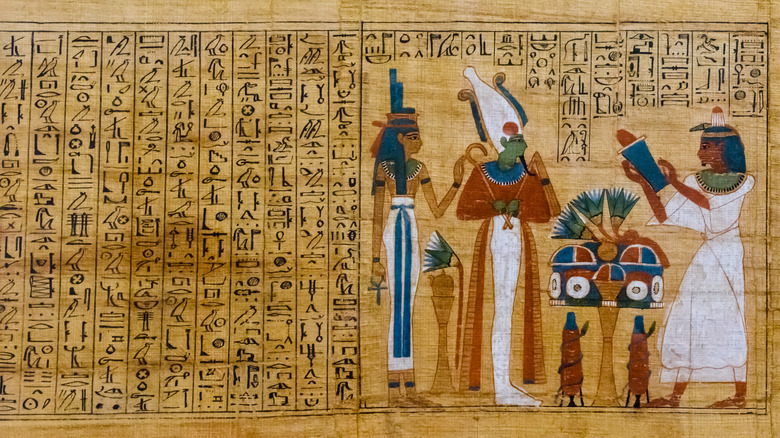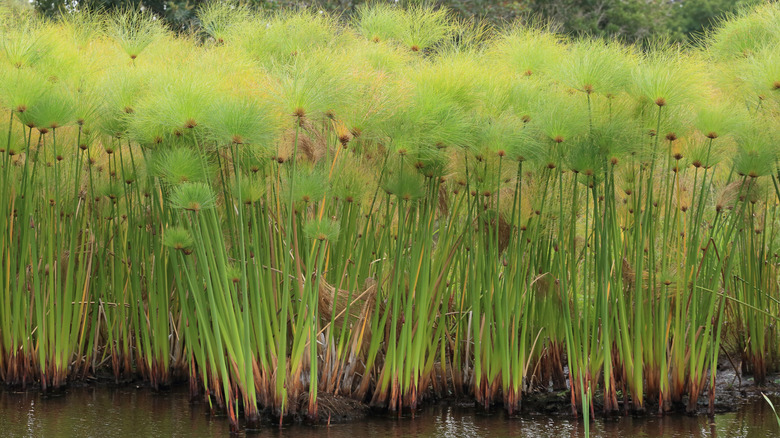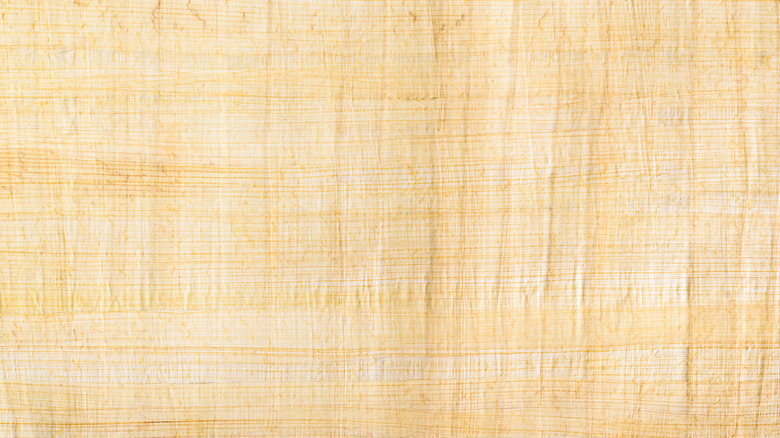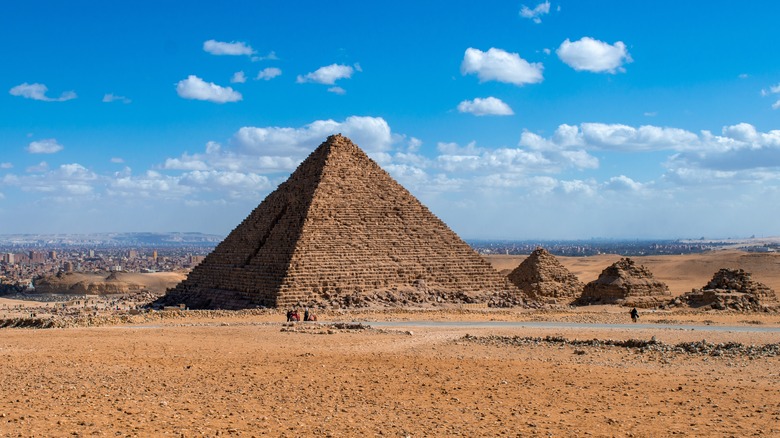How Did Ancient Egyptians Make Papyrus?
It's easy to take something like paper for granted. Need to make a note? Just grab a sticky pad and pen, or go 21st century and snag your phone. No matter the medium, we're all exposed to the written word, day in and day out, in a torrent of little black letters on pages and screens. This gives our words the impression of permanence, and us the impression that language is a static, unchanging thing.
This wasn't always the case, of course. We have Johannes Gutenberg and the printing press circa A.D. 1440 to thank for ending the era of handwritten manuscripts, as World History recalls. By 1519, Martin Luther was using moveable type to spread the Protestant Reformation like wildfire. This kicked off the modern era of print, fiction, and eventually digital articles like this one, as The Washington Post overviews.
Before then, for thousands of years, writing was an elite skill belonging to scribes, the clergy, and the aristocracy. The world's first "full script" was cuneiform — a word-by-word written replication of spoken language — which arose in ancient Sumer around 3200 B.C., as the Metropolitan Museum of Art cites. Cuneiform on clay tablets developed as an administrative tool to record purchases, debts, and inventories. Before that, pictographs (little symbols) were imprinted on clay to mark purchases as far back as 6500 B.C. (per Live Science).
A little later on, Egypt sat ready to contribute to the writing revolution with the world's first paper — papyrus.
A key component of everyday Egyptian life
Papyrus and paper come with some extreme disadvantages, namely vulnerability to fire and water. The entire Library of Alexandria in Egypt, the greatest archive of the ancient world, burned to cinders and ash by A.D. 273 at the latest, per Time. Water obliterates paper just as easily. Take a look at what happens to old newspaper after several years of being exposed to the air and its moisture, the oils of human hands, and bacteria and mold. But clay? Fire just makes it harder.
Clay was relatively easy to obtain on the alluvial plains of Mesopotamia (per the journal Centaurus on the Wiley Online Library), but not so much in Egypt. Papyrus, though, was a reed that grew everywhere along the Nile River Valley and the Egyptian Delta, according to World History. "Papyrus," by the way, is both the name of the writing material and the plant it originates from. It's also a cognate (related word across languages) to the English word "paper."
Papyrus grew to about 16 feet. Apart from just writing, it was used for all aspects of Egyptian life: food, rope, baskets, sandals, toys and dolls for kids, ceremonial items like the ankh, amulets and spiritually protective objects, and even small boats. These advantages offset its vulnerability to fire and water. Over time, papyrus became so integral to everyday Egyptian life that the Egyptian afterlife was known as the "Field of Reeds."
A refined, painstaking process
The Roman naturalist Pliny the Elder was the first, to our knowledge, to document how to actually make papyrus. This didn't happen until A.D. 77-79, as the Metropolitan Museum of Art says, thousands of years after papyrus had already been in use. A combination of Pliny's account plus modern experimentation gives us a pretty accurate vision of how to actually make papyrus.
First, gather the plant while it's still green (and therefore flexible) and chop up its length into sections eight to 19 inches long (19 inches is the tallest scroll we've found). After that, strip off the harder, outer rind to expose the pith (the soft, inner rod). Now there are two options. Either slice the pith lengthwise, or peel it around its circumference bit by bit, from the outside in. The latter is best done using a pin. The objective is to make the strips uniform, a task far more easier said than done.
Next, lay the strips side-by-side and either let them dry in the sun, like Pliny said, or press and dry them. Once dry, overlap the edges by .4 or .8 inches. At this point, artisans used a "flexible starch-based paste" to glue the sheets together. In this way, new sheets could easily be added to the end of a long scroll. Papyri (the actual scrolls, not the material) were rolled up with the plant's pith on the outside to protect the writing on the inside.
Scrolls as old as the pyramids
Of course, the ancient Egyptians didn't invent papyrus overnight. They no doubt tinkered with the material year after year. By the time Pliny the Elder made his recording of the papyrus-making process in A.D. 77-79, papyrus had been in use at least since the building of the Pyramids at Giza.
The oldest papyri that has been discovered dates back to the third and fourth dynasties of Egypt's Old Kingdom (2686-2181 B.C.), as Smithsonian Magazine says, when king Khufu commissioned the building of the Great Pyramid. These were found only as recently as 2013, and they were written in hieroglyphics as well as hieratic, ancient Egypt's regular, cursive script used for everyday communication. As World History says, papyrus was harvested all the way back in pre-dynastic Egypt, by its earliest settlers in 6000 B.C. to about 3100 B.C.
All of the papyri we've found comes from important legal documents, government offices, temples, and collections of wealthy people, rather not commoners. Commoners would write on wood, stone, or time-honored clay, like in Mesopotamia. The papyrus-making process was so difficult that even though we've found countless scrolls, their use was reserved for the elite and the hands of skilled scribes. These scribes wrote in black and red ink, with red being used to emphasize importance, the beginnings of paragraphs, or names of evil spirits.
We have dry, desert environments and clever storage methods to thank for preserving such an easily flammable material for thousands of years.



